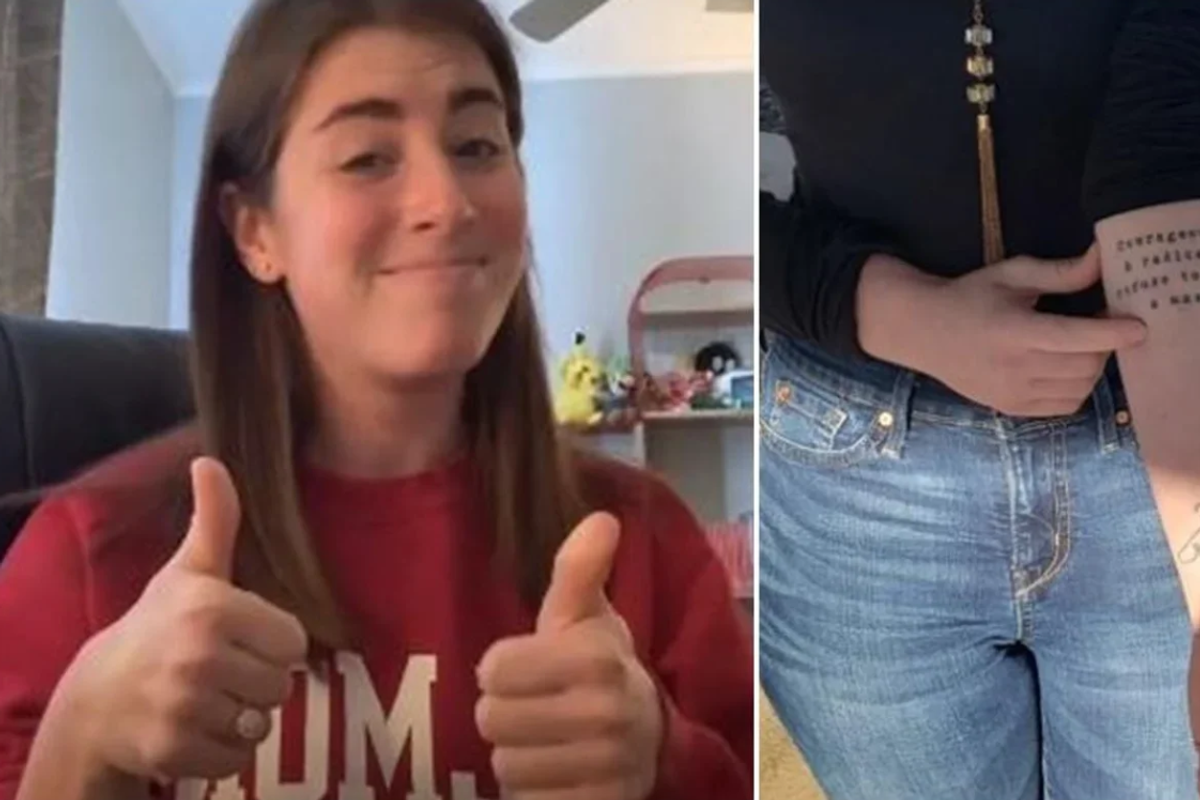Woman shares tattoo she got a week before COVID-19 that 'aged like milk' almost immediately
It seemed like a great idea at the time.
The timing of this woman's tattoo could not have been worse.
It's amazing to consider just how quickly the world changed in early 2020. One day, we were all just casually going along, living our lives. And then the next day, everything was different. If you were to have told someone in February of 2020 that the entire country would soon go on some form of lockdown, nearly everyone would be wearing a mask, and half a million people were going to die due to a virus, no one would have believed you.
Yet, it happened. And in addition to changing the world as we know it, it also sparked a sharp political and cultural divide here in the United States.
Leah Holland got one of the most poorly-timed tattoos ever
PPE masks were the last thing on Leah Holland of Georgetown, Kentucky's, mind on March 4, 2020, when she got a tattoo inspired by the words of a close friend.
"We were just talking about things we admire about each other and he said, 'You courageously and radically refuse to wear a mask,' like meaning that I'm undeniably myself. I thought that was a really poetic way of saying that," Holland told Fox 13.
So, she had "courageously & radically refuse to wear a mask" tattooed on her left forearm.
It's a beautiful sentiment about Leah's dedication to being her true self. It's also a reminder for Holland to remain true to herself throughout her life.
However, the tattoo would take on a very different meaning just two days later, when the first case of COVID-19 was reported in Kentucky. Almost immediately, everyone in the country was advised to wear masks whenever they left the house. Some refused, citing their own personal freedom to do with their body as they wish. Holland had, completely inadvertently, taken sides in a massive culture war with some simple black ink on her forearm.
- YouTube www.youtube.com
"It basically looked like I'm totally, you know, anti-mask or whatever, which is not the case," said Holland.
Now, she was embarrassed to be seen with the tattoo for fear she'd be associated with the anti-maskers who either deny the existence of the virus or refuse to wear a mask to protect others. Either way, it's a bad look.
So Leah started wearing long-sleeve shirts and cardigan sweaters whenever in public to cover up the tattoo.
TikTok users asked each other to share their 'dumbest tattoo'
@wakaflockafloccar #stitch with @hannanicbic I could NOT have had worse timing. #fyp #foryoupage #tattoo #worsttattoo #winner P.S. I’m not anti-mask I promise 🤦🏻♀️
In her video response, she talks about how her tattoo was about "not pretending to be something you're not," but then revealed it to show how — in an incredibly ironic twist — it made her out to be someone she isn't. "I just kind of wanted people to laugh with me because I think it's funny now, too," said Holland. At least the tatoo was able to spark a little levity in some dark times.
Plenty of people on TikTok laughed along with her with one user suggesting she update the tattoo with the phrase: "Hindsight is 2020." Another playfully accused her of "jinxing" the world and causing the virus outbreak. Another suggested adding an asterisk and "except during COVID" to the tattoo.
Some commenters tried to make her feel better about her poorly-timed body art. "Maybe tattoo a pair of theatre masks (one smiling, the other crying) on top, but for now, wear a hoodie," one user wrote. "Don't worry, in 15 years it will have its original meaning again!" another added.
"I was dying laughing. I'm like, I'm glad there are people that find this as funny as I think it is," said Holland.
"It will be a funny story to tell years from now," she said. "I don't think it will ever not be a funny story."

As the pandemic abated, Holland still had to explain her tattoo. The risks associated with COVID have decreased, but a fierce debate still raged over personal freedom versus responsibility to the greater good. Should you wear a mask in public when you're sick? Should you ever be required to wear a mask? How do you balance individual rights with our need to live in a cooperative society? Most won't soon forget the COVID-19 era in America, and there's no doubt that many will still feel passionate about those who refused to wear masks. Just don't lump Holland in with that group because of a poorly timed, but quite beautiful, sentiment. She'd never wear a mask, unless it were to protect herself and others from a deadly virus.
This article originally appeared four years ago.

